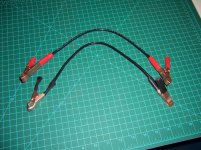RobHerrington
Member
This has surely been covered elsewhere, so -- forgiveness -- but is there a rule of thumb for the "life" of the e-tank? I refer to the liquid (the electrolyte), not the sacrificial iron.
I am tempted to change the bath every time I clean a pan because the water gets so dirty with just one pan and one piece of re-bar, but that surely doesn't reflect the conductivity of the bath.
If I had college to do over, I'd have majored in metallurgy and chemistry!
I am tempted to change the bath every time I clean a pan because the water gets so dirty with just one pan and one piece of re-bar, but that surely doesn't reflect the conductivity of the bath.
If I had college to do over, I'd have majored in metallurgy and chemistry!

